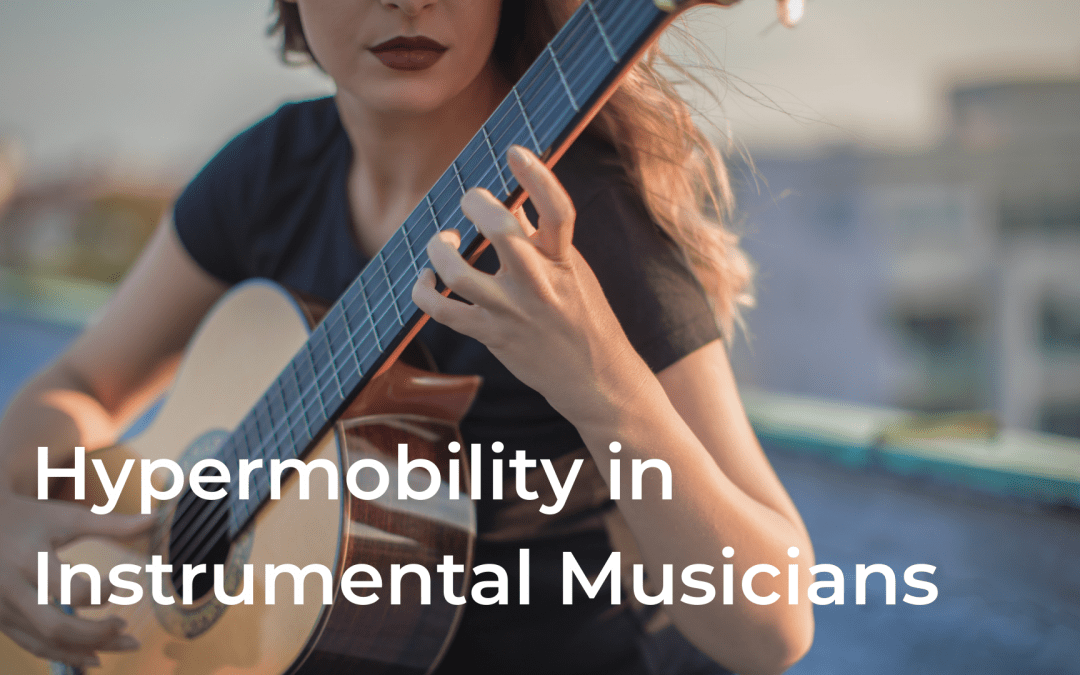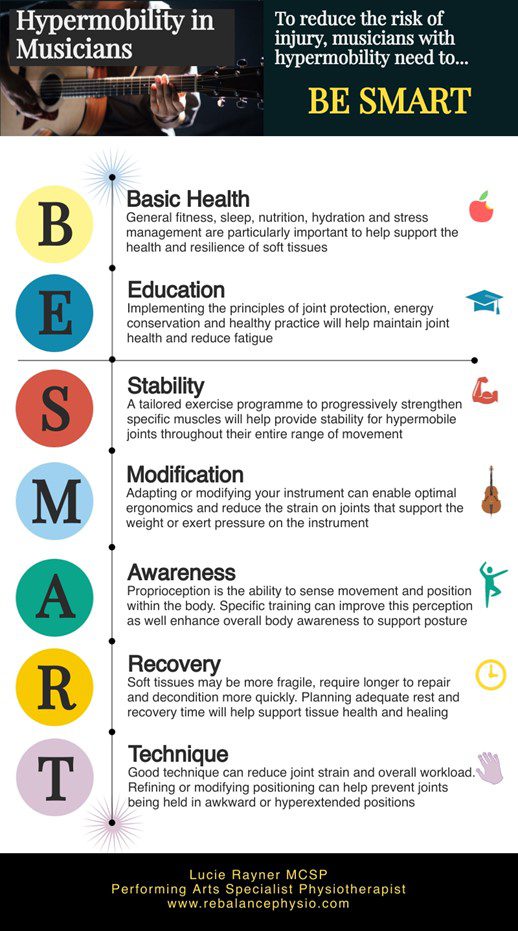Performance specialist physiotherapist Lucie Rayner, looks at hypermobility in the context of the unique physical demands placed on the musculoskeletal system by playing a musical instrument, and introduces strategies for hypermobile musicians to help mitigate the potentially increased risk of playing-related injury. This blog accompanies Lucie’s webinar for BAPAM and the Royal Society of Musicians, which takes place on September 15, 2021. Limited places are available and booking is open here: The RSM & BAPAM Present: Hypermobility in Musicians | BAPAM.
Playing a musical instrument places unique physical demands on the musculoskeletal system. Some structures need to be able to support a playing posture or the weight of the instrument for long periods. Others may be involved in repetitive movements or be required to stretch into an extreme position. Many musicians have the physical resilience to manage these loads placed on the body, however, others can suffer injury and musculoskeletal pain. There are several factors which are thought to make a musician more vulnerable to Playing Related Musculoskeletal Disorders (PRMDs) and there is some evidence that being hypermobile is one of these. A joint is hypermobile if it can move beyond the normal range expected for someone of the same age, sex and ethnicity. A person may have one or many joints which are hypermobile. A joint may be hypermobile due to genetic factors such as the shape of the joint surfaces or a person’s collagen type; or they may have acquired hypermobility through injury or undergoing certain types of training from an early age. Widespread hypermobility, where several joints are hypermobile, is termed Generalised Joint Hypermobility (GJH). If GJH is accompanied by musculoskeletal problems such as persistent joint pain, soft tissue injuries, disturbed proprioception (the ability for the joints to sense their position) or other traits, then it can be sign of a disorder such as Hypermobility Spectrum Disorder (HSD) or Hypermobile Ehlers Danlos Syndrome (hEDS).
How could Hypermobility contribute to injury in musicians?
It has been proposed that hypermobility is related to an increased risk of injury due to:-
- Increased workload and fatigue linked to the extra muscular effort required to help stabilise the joints. Joints are normally stabilised by the ligaments and joint capsule which surround them. In some hypermobile people, these structures are very flexible, so do not offer the same inherent stability. In order to keep the joints stable, the body uses muscle tension to offer secondary support, which requires higher muscular effort.
- Some soft tissues (e.g., ligaments and tendons) may be more fragile in those with hypermobility, leading to an increased risk of mechanical failure and impaired healing.
- Hypermobility has been linked to lower muscle strength and exercise capacity, with deconditioning occurring more rapidly during an absence from playing.
- A deficit in proprioception can lead to joints being held in awkward positions or moving too quickly into an unstable range leading to strain on the joints and surrounding soft tissues.
Due to these factors, mechanisms which lead to injury in any musician can be amplified in those with hypermobility. This includes the impact of sustained static loading; dynamic, repetitive loading; and contact pressure from the instrument (such as a thumb holding the weight of a clarinet or the fingers pressing on the strings and hyperextending the finger joints). These factors can all accumulate to increase the overall load and risk of PRMDs.
However, there are several strategies that hypermobile musicians can adopt to help mitigate these factors, which are summarised in the infographic below. Hypermobile musicians need to BE SMART to protect joint health, improve awareness and reduce injury risk:
Basic Health foundations are critical for the hypermobile musician in order to support tissue health and maximise recovery. An individualised programme of exercises to strengthen certain muscles groups, improve proprioception and support joints will be important. The musician can also consider modifying the instrument, making changes to their playing position and optimising their technique to maximise efficiency and reduce overall workload.
Many health professionals agree that education is one of the most important factors in the successful management of those with hypermobility. Having a good understanding of how to apply principles of joint protection, energy conservation and healthy practice will empower the musician to manage their musculoskeletal health and support a sustainable music career. The Hypermobility in Musicians workshop aims to educate musicians in these principles as well as improve awareness and understanding about hypermobility through a mixture of theory based learning and practical examples of exercises and techniques to support their playing. This workshop is part of a series of health workshops for musicians developed by The Royal Society of Musicians (RSM) in collaboration with BAPAM.
BAPAM also offer free Performing Arts Medicine Clinics for student or professional musicians with health-related problems including hypermobility.


